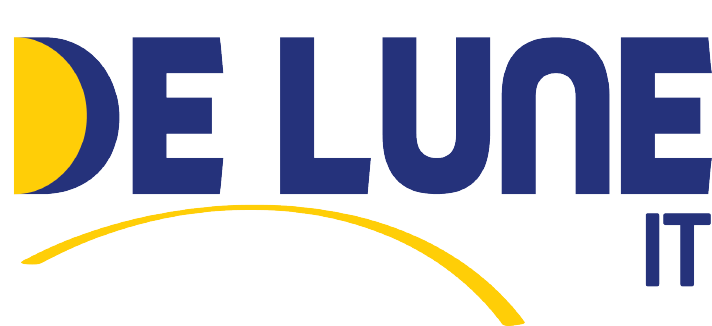As the shift towards remote work grows, ensuring secure online meetings and work sessions via platforms like Zoom, whether from home or public spaces like coffee shops, has become increasingly common. While certain criminal activities such as credit card skimming at gas stations might be on the decline due to reduced commuting, other illicit practices like hacking thrive in the remote work landscape.
This scenario presents fresh opportunities for cybercriminals to exploit. Over the last five years, the FBI has received over 2.76 million reports related to cybercrimes, encompassing identity theft, extortion, and phishing, resulting in financial losses exceeding $6.9 billion, based on FBI data from 2021.
In this digitally interconnected world where remote work and online interactions are the norm, the stakes for safeguarding our digital identities have never been higher. As cyber threats continue to evolve, the tale of multi-factor authentication (MFA) emerges as a crucial chapter in the ongoing battle for online security.
Humble Beginnings to Modern Necessity
The genesis of the internet as a classified government program soon welcomed curious minds from academia, where researchers began prodding its vulnerabilities for preventive research. As the cyber landscape expanded, so did the ingenuity of malicious actors. Traditional security measures, from passwords to firewalls, found themselves challenged by the ever-evolving tactics of cybercriminals.
Enter multi-factor authentication, a revolutionary paradigm that redefines how we protect our online assets. MFA operates on the principle of layered security, demanding multiple authentication steps before granting access. These factors encompass what you know, possess, or inherently are—a blend of passwords, physical tokens, smartphones, or biometrics like fingerprints.
From 2FA to MFA Dominance
The roots of MFA trace back to its predecessor, two-factor authentication (2FA), which initially faced user resistance due to inconvenience. The adoption of public-key cryptography by larger enterprises remained costly and complex. However, the mid-2000s witnessed a turning point with the proliferation of smartphones. These devices not only enhanced productivity but also facilitated more convenient 2FA solutions through SMS or email authentication codes.
Simultaneously, the late 2000s and early 2010s saw a surge in data breaches, alarming both consumers and businesses. High-profile breaches like those at Sony Pictures and the U.S. Office of Personnel Management (OPM) underscored the vulnerability of traditional password-based security. President Obama’s call to action in 2016, acknowledging the inadequacy of passwords, ignited a national awareness campaign, propelling the adoption of MFA.
Advantages of MFA
The transition from passwords to MFA heralds a new era in cybersecurity, bringing forth several transformative advantages.
- Enhanced Security Layers Beyond 2FA
MFA offers a heightened level of security compared to 2FA by implementing multiple layers for verifying employee and consumer credibility. For instance, organizations may require a password, a Time-based One Time Password (TOTP), and validation through tools like Google Authenticator. This comprehensive approach ensures stringent verification of end-users.
The added security layers ascertain that individuals seeking access are indeed authentic. Even if hackers acquire one form of authentication, they face the challenge of proving identity through alternate means. Therefore, for entities storing sensitive consumer information, adopting more than two authentication steps becomes crucial to foster and maintain consumer trust.
- Reinforcement of Consumer Identity Protection
MFA serves as a critical defense against identity theft, bolstering the security of traditional username and password logins with an extra layer of protection. TOTP, typically transmitted via SMS or automated phone calls, poses a formidable challenge for cybercriminals. Accessing resources requires dual verification, instilling a more vigilant approach to authentication.
- Compliance with Regulatory Standards
The implementation of MFA often aligns with specific industry regulations. For instance, compliance frameworks like PCI-DSS mandate MFA in certain scenarios to prevent unauthorized access to systems. This adherence to MFA standards ensures ongoing protection even amidst unforeseen consequences arising from application updates.
- Seamless Implementation Process
MFA, inherently non-intrusive, seamlessly integrates within an organization’s virtual space without disruption. Moreover, its user-friendly interface simplifies adoption for consumers, requiring minimal effort to familiarize themselves with the system.
- Compatibility with Single Sign-On (SSO) Solutions
An MFA system in compliance with industry standards seamlessly integrates with SSO solutions. This integration eliminates the need for numerous complex passwords across various applications. The secondary authentication through SSO not only confirms consumer identity but also mitigates data loss risks stemming from forgotten passwords. This dual approach streamlines access while fortifying security measures.
- Elevated Remote Security Measures
Remote work scenarios often attract cyber threats attempting unauthorized system access. The integration of MFA with SSO complicates such attempts for cybercriminals. MFA aids in thwarting unauthorized access and promptly alerts the IT department about potential threats, enabling swift actions to block suspicious users.
Embracing a Secure Future
The evolution of MFA mirrors the perpetual dance between cybersecurity advancements and evolving threats. Its journey from initial user reluctance to becoming a linchpin in digital security signifies an adaptive response to the escalating challenges of the cyber realm.
As we navigate an ever-expanding digital landscape, the onus lies on both individuals and organizations to embrace MFA as a cornerstone of their security infrastructure. Its multidimensional approach not only fortifies defenses but also instills confidence in an era where cyber threats loom large.
In essence, the evolution of MFA is not merely a technological progression but a testament to our collective commitment to fortify the digital frontier against adversarial incursions. By embracing and advancing MFA, we stride toward a future where the safety of our digital identities remains steadfast.
In this ongoing saga of cybersecurity, the evolution of MFA emerges not as an endpoint but as an integral chapter in our relentless pursuit of a safer and more secure digital realm.
